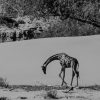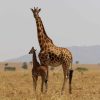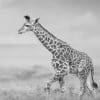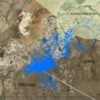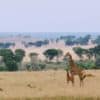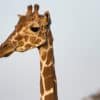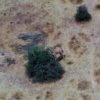Giraffe are predominantly browsers and mainly eat leaves and buds on trees and shrubs. They will also eat herbs, climbers and vines, and prefer flowers and fruit when in season. The proportion of grass in their diet is very low. Vachellia or Senegalia (formerly Acacia) leaves and shoots form the bulk of a giraffe’s diet in most areas.
Giraffe use their extremely dexterous and long tongue as well as the ridged roof of their mouth to help feed on a variety of leaves and shoots – all dependent on the plants defences!
Evidence shows that giraffe adapt their diet to the food species available in the specific region they live in, as well as adapting intake depending on seasons and plant growth stage; for example in some parts of Southern and Eastern Africa, giraffe often feed on deciduous trees, shrubs and vines during the wet season, and on evergreen species, near streams and rivers, during the dry season.
Males are capable of feeding on vegetation at higher levels than females, although both can stretch their head and neck near vertical to access preferred forage. Scientists have found that the diet of adult females is nutritionally richer than that of males who consume significantly higher proportions of fibre and lignin. Giraffe appear sensitive to their own nutritional needs. For example, in Niger nursing females seem to avoid high levels of tannins in leaves even though it means giving up higher quality forage.
Regardless of their size, giraffe are not as destructive as elephant when feeding, indeed one researcher in the Serengeti, Tanzania, demonstrated that when giraffe are not too numerous, their impact can actually stimulate shoot production in plant species, which soon declined when the browsing stimulus was withdrawn. There are, however, also some natural plant protection methods at work which ensure over-browsing does not happen. For example carnivorous ants that are symbiotic with some plant species reduce the amount of time that giraffe can spend browsing on any one plant.
On a positive mutual note, giraffe can actively benefit some of their food sources. Seed consumption by giraffe favours seed dispersal into non-shaded habitats and enhances the potential for seed germination through the beneficial effects of its digestive processes. Giraffe are also thought to play a role in pollination.
Feeding takes up most of a giraffe’s day – up to 75% at certain times of the year. Time spent browsing often increases markedly during the dry season compared with the wet season as good quality browsing is harder to find and giraffe often have to travel further to satisfy their nutritional needs. Giraffe are also active at night, but it is believed that they feed significantly more during moonlit nights and ruminate more during dark nights.


